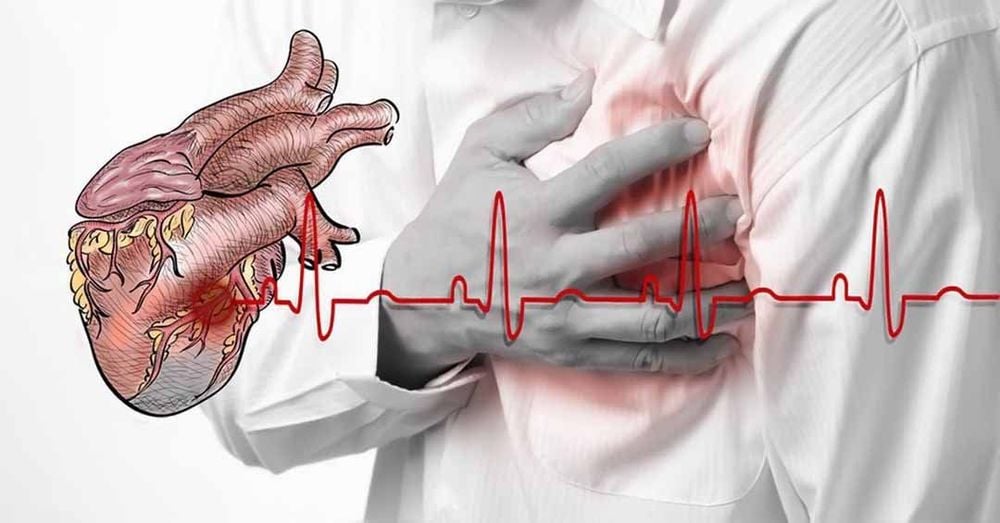This is an automatically translated article.
The Valsalva test is named after the Italian physician Antonio Maria Valsalva. This test is a breathing technique that can be used to help diagnose problems with the autonomic nervous system or problems with heart rhythm restoration.1. What is the Valsalva maneuver?
In 1704, Antonio Maria Valsalva (1666-1723) introduced his maneuver as a technique to expel pus from the middle ear. The test was then forgotten until in 1859, Weber used it to alter the pulse at will. Beginning in the 1950s, many other investigators reported markedly abnormal Valsalva responses in patients with congestive heart failure.In today's modern medicine, the Valsalva maneuver is a breathing technique that can be used to help diagnose problems with the autonomic nervous system (autonomic nervous system). This test is also used to help restore a normal heart rhythm if a person's heart begins to beat too fast.
2. Procedure for performing the Valsalva maneuver
General Principle: The Valsalva maneuver is performed by forcefully exhaling at the same time as the epiglottis is closed after maximal inspiration. This movement is described as pushing when defecating and has the effect of increasing pressure in the chest. The Valsalva maneuver refers to changes in blood pressure and pulse that occur during both the pushing phase of the test and the recovery phase after no longer pushing.Equipment: The equipment to perform the Valsalva maneuver is very simple, just a stethoscope and a sphygmomanometer. In addition to making the measurement results intuitive and easy to record, you can use a high-frequency transducer Doppler ultrasound machine to record the flow changes inside the brachial artery.
Procedure: Before examining, the doctor needs to greet and take the patient's medical history. To perform the test correctly, the physician needs to instruct, model, and test the patient in breathing techniques — the required breathing movements at certain intervals.
First, the patient needs to take a deep breath and then ask the patient to exhale and push hard like a straining when defecating, while one hand is covering the nose. Hold this position for about 10 seconds and then ask the patient to breathe normally.
Clinicians will measure Valsalva response using a sphygmomanometer in standardized straining phase clinical studies by having the patient suck on a tube connected to a pressure transducer to ensure pressure on exhalation from 30-40 mmHg for at least 10 seconds. First, inflate the sphygmomanometer's cuff to 15 mm Hg above the patient's resting systolic blood pressure and maintain this pressure during the test and for 30 seconds thereafter. Ask the patient to perform the Valsalva maneuver for 10 seconds, then resume normal breathing. The doctor listens to the korotkoff in the brachial artery during the procedure. The korotkoff sound will appear when the patient's blood pressure exceeds the pressure in the air bag.

Nghiệm pháp Valsalva được thực hiện bằng cách thở ra gắng sức cùng lúc với đóng nắp thanh môn sau khi đã hít vào tối đa
3. Meet Valsalva
The normal Valsalva response is divided into four stages: Stage 1: A rapid increase in systolic blood pressure due to increased intrathoracic pressure acting directly on the aorta. Stage 2: Blood pressure drops due to decreased venous return as the patient continues to push. Stage 3: As soon as the patient stops pushing and exhaling, the blood pressure drops by half due to a temporary pooling of blood in the pulmonary veins. Stage 4: Blood pressure rises above that in the air sacs mainly due to sympathetic reflexes caused by the pre-existing hypotension. Thus, when auscultating on the brachial artery, the korotkoff sound will be present in stages 1 and 4 but not in stages 2 and 3 of manoeuvre. Changes in heart rate are out of phase with changes in blood pressure. Meaning heart rate will increase in stages 2 and 3 and decrease in stages 4.Abnormal Valsalva response: In patients with congestive heart failure, there are 2 types of abnormal Valsalva response:
No response The patient's blood pressure over-responsiveness did not rise in stage 4, so only the korotkoff sound was heard in stage 1. The square wave response due to the increased blood pressure parallels the intrathoracic pressure hence the korotkoff sound. audible during stages 1 and 2. The korotkoff voice is always audible during stage 1 regardless of whether the Valsalva response is normal or abnormal. If the korotkoff sound is not present during this stage, the intrathoracic pressure has not been raised sufficiently high during the test and the results are unusable. Beta-blockers can cause false-positive responses mainly without overreactions in stage 4.
In patients with congestive heart failure, the korotkoff sound will not be present in stage 4 because of the heart. inotropic failure sufficient to increase cardiac output in response to hypotension. And the hypotensive response does not occur in stage 2 because central venous hypervolemia maintains constant venous return to the right heart and congested lungs provide ample blood to the left heart throughout the procedure. forensic procedure.

Ở những bệnh nhân suy tim sung huyết, tiếng korotkoff sẽ không xuất hiện trong giai đoạn 4
4. Application of the Valsalva maneuver
This simple technique is used in a number of different cases, but the important goal is still to make an impact on the blood pressure and heart rate of the patient.Restore heart rate: The Valsalva maneuver can help people with tachycardia. If the first procedure does not respond, the doctor may encourage the patient to have a second attempt.
Diagnosis of autonomic nervous system disorders : In addition to helping with tachycardia, the Valsalva maneuver can also be used. can be used to help diagnose disorders of the autonomic nervous system. Changes in heart rate and blood pressure over the different phases of the Valsalva maneuver can help your doctor identify problems with sympathetic and parasympathetic nerve function.
In the case of a patient with orthostatic tachycardia syndrome (POTS), blood pressure will increase significantly during stages 2 and 4 of the test. Orthostatic tachycardia syndrome is a sudden drop in blood pressure when a person stands up after sitting or lying down. This is a serious health problem that can lead to fainting, falls, and other complications.
Treatment of Tinnitus: The Valsalva maneuver can also help us deal with relatively harmless cases, such as a condition where air temporarily blocks the Eustachian tube - the auditory tube in the inner ear. Most of us have probably experienced this feeling of tinnitus during take-off, landing, or scuba diving.
Bodybuilding: The Valsalva maneuver can be said to be the optimal breathing pattern to generate maximum force and is often used in some bodyweight exercises that require stability of the body such as squat, deadlift, bench press ... However, the practitioner should consult the coach before voluntarily practicing this test.
5. Contraindications
The Valsalva maneuver is contraindicated in patients with recent bleeding, ocular or central nervous system surgery. The test should also not be performed in patients with acute myocardial infarction because it may predispose to arrhythmias, although in patients with chronic ischemic disease the test is safe and even effective. used to end angina pectoris.
Nghiệm pháp cũng không nên thực hiện ở những bệnh nhân nhồi máu cơ tim cấp













